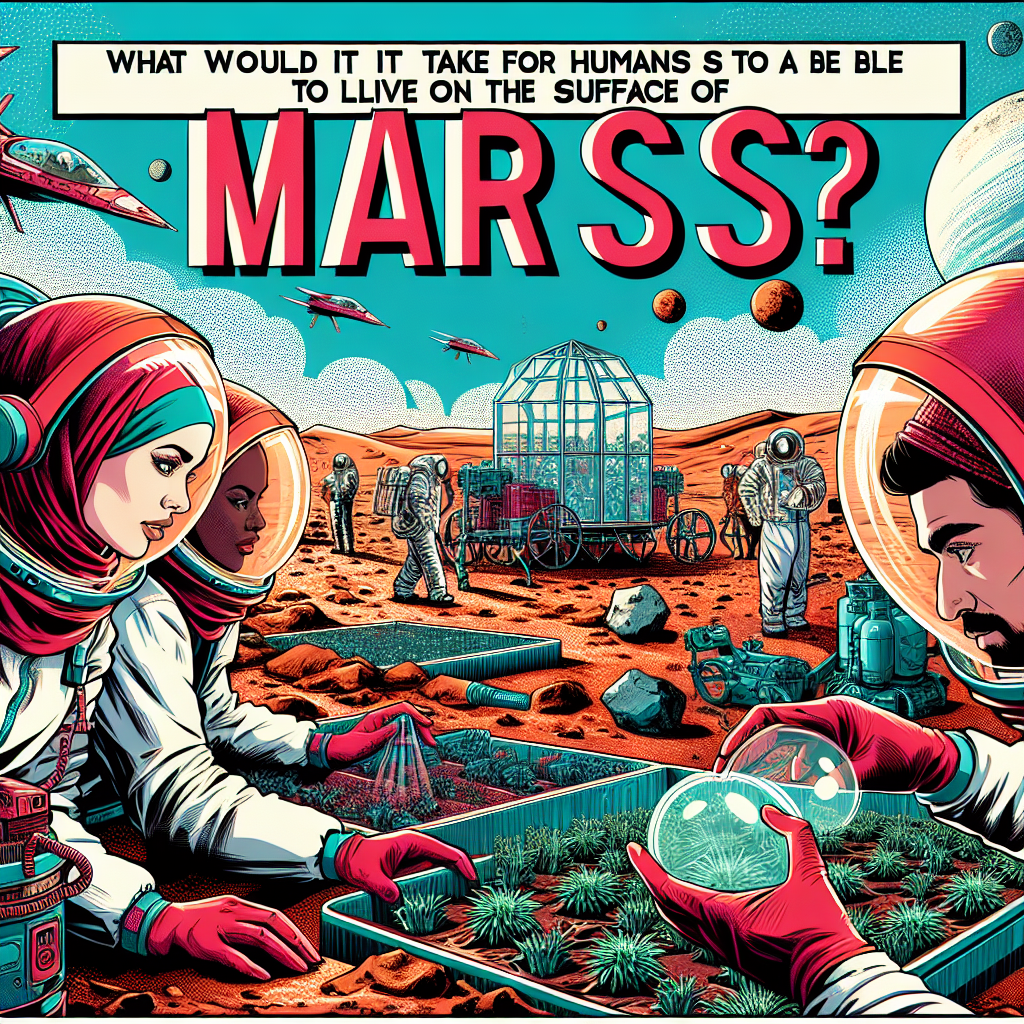Let's dive into the challenges of making Mars habitable for humans.
The first hurdle we face is the harsh Martian environment. Imagine stepping out of a plane on a cold winter day, but instead of just feeling chilly, the air is so thin it would freeze the water in your eyes and skin instantly. That's what Mars is like, with atmospheric pressure less than 1% of Earth's. To survive, we'd need a reliable air supply, which means setting up an oxygen generator or bringing a steady supply from Earth.
Temperature is another issue. Mars is a very cold place, with average temperatures ranging from -125°C to 20°C (-200°F to 70°F). It's like leaving your car parked in the open on a winter night, only to find the engine oil frozen solid the next morning. Our habitats would need insulation, heating systems, and protective shielding to keep the cold out.
Radiation is a major concern as well. Mars has a thin atmosphere, which doesn't provide adequate protection against harmful cosmic rays and solar flares. It's like being in an airplane during a thunderstorm, except the radiation is much more intense and frequent. We'd need to develop shielding technology or habitats that can absorb or deflect radiation.
Next, let's consider the Martian soil. It's not as fertile as Earth's, and the chemistry is vastly different. Imagine trying to grow plants in a mixture of construction dust, metal shavings, and chemicals – that's roughly what Martian soil is like. We'd need to either develop specialized farming techniques or transport large amounts of Earth soil to Mars.
Another challenge is the Martian day, which lasts 24 hours and 37 minutes. This might not seem like a big deal, but our bodies are attuned to a 24-hour cycle, and disrupting it could affect our sleep patterns, hormone regulation, and overall health. It's like being on a plane that's constantly turbulent – you might adapt, but it's never comfortable.
Now, let's talk about the psychological aspects. Living in isolation for extended periods, with limited contact with family and friends back on Earth, can take a toll on mental health. Imagine being in a remote cabin in the woods, but instead of enjoying the solitude, you're stuck there for years with limited connectivity. We'd need to develop strategies for maintaining mental well-being, such as virtual reality experiences, social events, and counseling services.
To overcome these challenges, we'll need to establish a reliable transportation system. This means developing reusable rockets, in-orbit fueling, and efficient propulsion systems. It's like trying to build a highway system on a new continent – you need a solid infrastructure to support the flow of people and goods.
We'll also need to develop sustainable in-situ resource utilization (ISRU) techniques. This means using Martian resources to produce fuel, oxygen, and other essentials, rather than relying on resupply missions from Earth. Imagine being on a deserted island and having to create your own tools and shelter from available materials – that's what ISRU is all about.
In terms of habitat design, we'll need to create modules that can be easily transported, assembled, and expanded. It's like building with LEGO blocks, except each piece weighs tons and must withstand extreme conditions.
Another crucial aspect is the Martian gravity, which is only about one-third of Earth's. This could lead to a range of health problems, including muscle and bone loss, vision impairment, and cardiovascular issues. Imagine being on a long-duration spaceflight, where you need to exercise constantly to maintain your physical health – that's what we'd face on Mars.
In terms of potential solutions, we could use rotating sections within habitats to simulate gravity, or develop exercise regimens that focus on resistance training and muscle strengthening. We might also need to develop medications or treatments to mitigate the effects of low gravity on the human body.
To make Mars habitable, we'll need to establish a reliable and sustainable food supply. This could involve hydroponics, aeroponics, or bioregenerative systems that recycle resources and minimize waste. It's like running a self-sustaining farm, where every input and output is carefully monitored and optimized.
Finally, we'll need to develop a reliable and efficient energy system. This could involve solar panels, nuclear reactors, or even advanced nuclear fusion. It's like building a power grid for a small city, except the infrastructure must be capable of withstanding harsh Martian conditions.
In conclusion, making Mars habitable for humans will require significant advances in multiple areas, from habitat design and life support systems to radiation protection, transportation, and in-situ resource utilization. It's a monumental challenge, but one that could ultimately pave the way for humanity's expansion into the solar system.

Popular Space Questions
Find answers to the trending space questions being asked by our community on social media.
- What would happen if a pulsar's beam hit Earth?
- How many galaxies are there in the universe?
- How far is Pluto from Earth?
- How big is the Earth?
- What are the planets in order?
- How many planets are in the Milky Way?
- What if we could create a Dyson sphere around the sun?
- What if we found a way to manipulate gravity?
- What would happen if a cosmic string passed through Earth?
- How many planets are in our solar system?